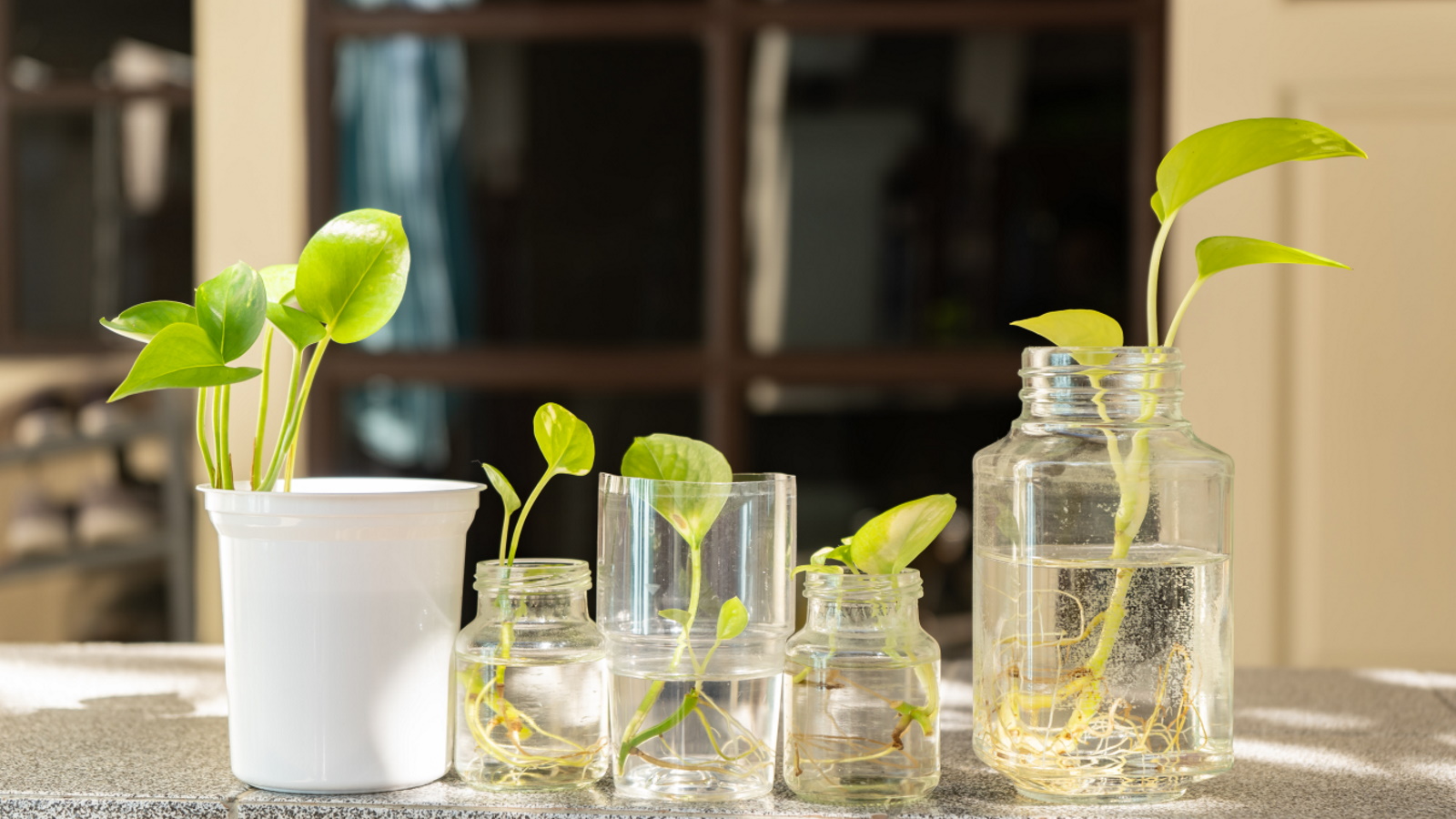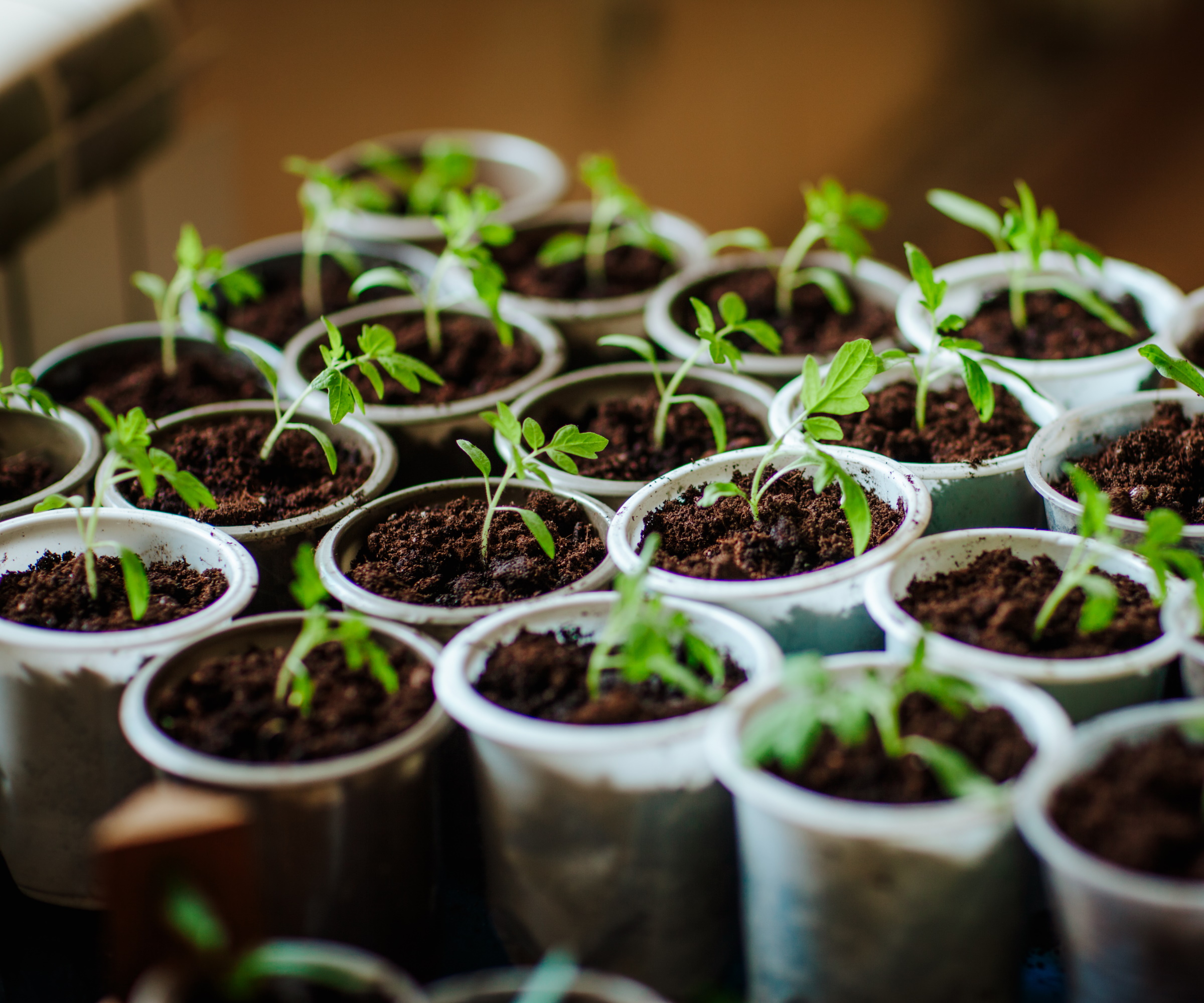Indoor growing system ideas – 5 easy ways to create an indoor garden
Growing indoors doesn't have to be challenging - and with these simple systems, you'll have a thriving indoor garden in no time


When it comes to creating indoor garden ideas, there can be lots of factors to balance, including room temperature, lighting and humidity levels. Using an indoor growing system can help counter any challenges and allow you to grow more successfully indoors.
Gardeners will often use indoor growing systems to grow things like herbs or microgreens, but they can also be used to aid the propagation of indoor plants.
'Indoor growing systems enable growing plants in a controlled and stable environment. Each system has pros and cons, and choosing one depends on the type of plant, and available space,' says Vladan Nikolic from Mr. Houseplant.
The good news is that there are so many different indoor growing systems you can use in your home. We've collated a list of the best systems to try with tips from experts to make them work successfully.


Vladan Nikolic is a houseplant expert with over 10 years of experience. He is the founder of the houseplant care blog Mr. Houseplant and is a social media influencer for houseplants with over 500,000 followers.
5 indoor growing systems
Navigating how to grow plants indoors can be tricky when you're first starting out and it can take time to figure out if your indoor space provides the best conditions to encourage growth. Luckily, there are lots of different indoor plant systems you can try that can help with successful indoor growing. We've spoken to experts to find out more about using the best indoor growing systems.
1. Heat mat

A popular choice among houseplant owners is a heat mat. This is especially beneficial in colder seasons when the average room temperature may be lower which can slow down growth rate.
It's as simple as it sounds - a warm mat for your seedlings and cuttings to sit on while they germinate and root. It's a great tool to use for soil propagation as it helps to increase the temperature of the potting medium, encouraging roots to develop.
Design expertise in your inbox – from inspiring decorating ideas and beautiful celebrity homes to practical gardening advice and shopping round-ups.
'They increase the success rate of seed starting and promote faster plant growth. One challenge of using heat mats is the potential for leggy root growth if plants are left on the mat for extended periods,' says Autumn Hilliard-Knapp, houseplant expert from Perfect Plants.
Lots of heat mats allow you to control the temperature and adjust as needed, like this seedling heat mat from Amazon.
As well as propagation, heated mats are also typically used for growing edibles indoors from seed, like tomatoes, peppers and eggplants. They're highly versatile and you can also use them to keep houseplants warm during winter months to stop them going dormant in the cold.

Autumn is a horticulture specialist and marketing professional at Perfect Plants Nursery. With four years of experience in the horticulture industry, she has developed a passion for helping people create beautiful indoor and outdoor spaces to enjoy. Her expertise in horticulture encompasses a broad range of activities, including plant care and selection, landscape design, and maintenance.
2. Hydroponic kit

Perhaps the most common indoor growing system to help with water propagation is a hydroponic kit. As indicated by the name, these growing systems are designed to grow using water.
Hydroponic growing kits are easy to use and come in lots of different shapes and sizes, so there is an option for any space. They tend to have a vessel that holds water and cuttings and often have an overhead grow light, like this hydroponic growing system from Amazon.
As with any water propagation method, it's a good idea to place your hydroponic growing system in a bright spot to help roots develop. It's a great way to grow leafy greens like lettuce, as well as herbs like basil, and aids propagation of tropical plants like monsteras.
'Hydroponic systems provide a great way to grow herbs indoors. Many herbs grow readily in water and these systems allow you to harvest fresh herbs indoors right where you need them. Some systems are small enough to fit on your kitchen countertop,' says Julie Bawden Davis, indoor plant expert at Healthy Houseplants.
'You do need to keep on top of harvesting herbs grown this way, as they can tend to get big and unwieldy and quickly outgrow the system if you don’t do so,' she adds.
There are lots of benefits that come with growing in water. 'It reduces the risk of diseases and pests, since there is no soil in which the pathogens or pests can multiply,' says Vladan Nikolic.

Julie Bawden-Davis is a garden author and University of California Certified Master Gardener, who has written several gardening books, including Indoor Gardening The Organic Way. In addition to running HealthyHouseplants.com, she shares indoor gardening advice on her YouTube channel @HealthyHouseplants.
3. Propagation station

If you're looking for a specific system that will help propagate your plants successfully, a propagation station might be just what you need.
'A propagation station is a dedicated setup for propagating plants from cuttings or seeds. It is a great way to watch your cutting's roots grow,' says Autumn.
You can find lots of propagation stations online, like this desktop propagation station from Amazon, or create them yourself. The key feature is using glass and see-through containers that allow you to track how your cuttings are progressing with establishing roots.
Like the hydroponic kits, this indoor system is best for water propagation and can make an attractive feature to place on your windowsill with beautiful glasses and other receptacles.
'Not all houseplants can be rooted in water, so this doesn’t work for all indoor plants. It is also necessary to change the water on a regular basis to promote healthy growth of the rooted cuttings,' says Julie.
Another benefit of using this type of system is that it's relatively low maintenance, other than changing the water to keep it fresh. Plants that propagate well in water include rubber plants, pothos and string of hearts.
4. Humidity dome

Plant parents with tropical indoor plants will be aware of the need to increase humidity to keep these plants happy. You can regularly mist them once established, but using a humidity dome when growing plants from seed can also help.
'A humidity dome is a transparent cover placed over pots or trays with seeds used to create a microclimate with high humidity levels around seeds and seedlings,' says Vladan.
There are lots of humidity domes on the market, all in different sizes, like this humidity dome with an LED grow light from Amazon. They help speed up propagation and protect young plants from things like temperature fluctuations, increasing chances of successful growth.
Humidity domes can be used to help most seeds germinate and grow, including herbs, vegetables, leafy indoor plants and flowers.
'Humidity domes and heat mats are often used in conjunction with each other. Be sure to remove your plants from the humidity dome once they have sprouted. If plants are left under the humidity dome for too long mold issues may arise,' says Autumn.
It's recommended to regularly vent a humidity dome to prevent excessive condensation and fungal growth.
5. Miniature indoor greenhouse

Growing vegetables indoors is made easier with miniature indoor greenhouses. They don't take up much space and can sit neatly and without any mess in your home.
'Mini indoor greenhouses are enclosed structures that maintain favorable temperature and humidity levels for plants. They are suitable for small spaces and provide protection against pests and harsh environmental conditions. Although, they can be a pricier choice,' says Autumn.
You can find miniature greenhouses in lots of different styles to suit different indoor aesthetics, like this 4-tier indoor greenhouse from Amazon.
'They are also excellent choices for growing and propagating plants that like humid conditions, such as plants that grow well in terrariums,' says Julie. Like with humidity domes, however, it's important to watch out for fungal issues if too much moisture builds up.
Why not try creating your own DIY indoor greenhouse from household items?
FAQs
Can I grow fruit and vegetables indoors?
Yes, it is possible to grow edible plants indoors. It doesn't matter if you don't have an outdoor space to grow your crops. Using an indoor growing system, like a mini greenhouse or humidity dome, you can grow an array of fruit, vegetables and herbs. Common choices include garlic, strawberries, cress and more. Using an indoor growing system will help these plants thrive and provide optimal conditions that may be lacking indoors otherwise.
How do I make a DIY indoor growing system?
While there are lots of indoor growing systems on the market, sometimes it can be expensive. It's easy to create DIY growing systems using a few household items. For example, you can create a humidity dome with a plastic bottle cut in half and use glasses and clear containers to set up a water propagation station. There are lots of ways to get creative when making your own setup. Just remember to research what the optimal growing conditions are for the plants you want to grow and ensure you provide them however you create a system.
Indoor growing systems are great for assisting indoor gardening because they can help provide stable environments for seedlings and cuttings to germinate and roots, no matter your room conditions. It's a great way for beginners to start successfully growing indoors, especially if paired with easy indoor plants. For gardeners asking how to begin hydroponic gardening for sustainability reasons - this innovative approach to growing needn't be confusing, our guide has got you covered.

Tenielle is a Gardens Content Editor at Homes & Gardens. She holds a qualification in MA Magazine Journalism and has over six years of journalistic experience. Before coming to Homes & Gardens, Tenielle was in the editorial department at the Royal Horticultural Society and worked on The Garden magazine. As our in-house houseplant expert, Tenielle writes on a range of solutions to houseplant problems, as well as other 'how to' guides, inspiring garden projects, and the latest gardening news. When she isn't writing, Tenielle can be found propagating her ever-growing collection of indoor plants, helping others overcome common houseplant pests and diseases, volunteering at a local gardening club, and attending gardening workshops, like a composting masterclass.